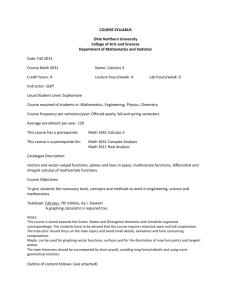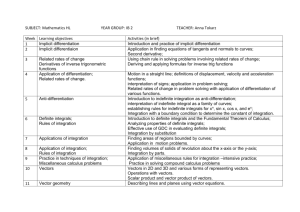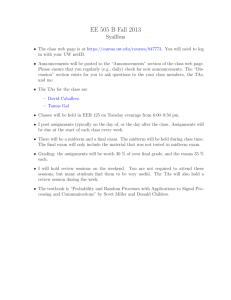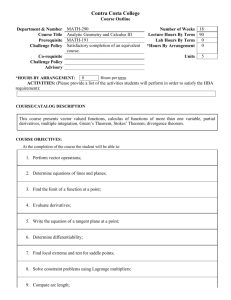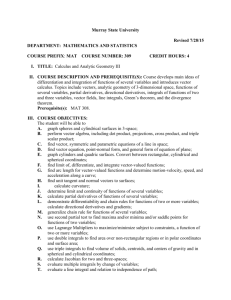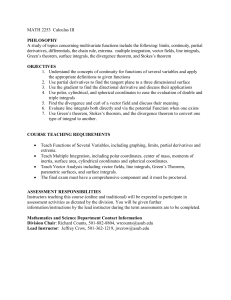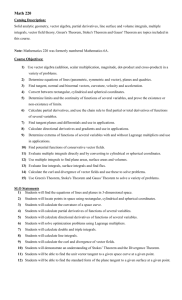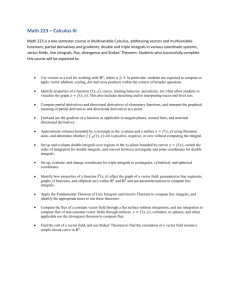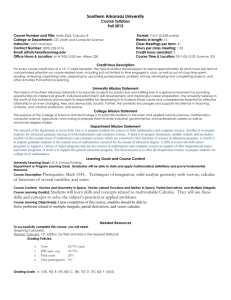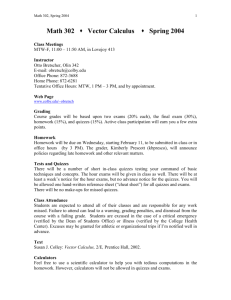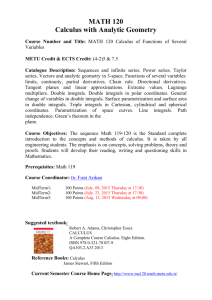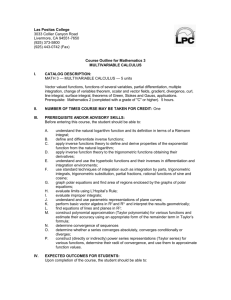SYLLABUS - San Juan College
advertisement
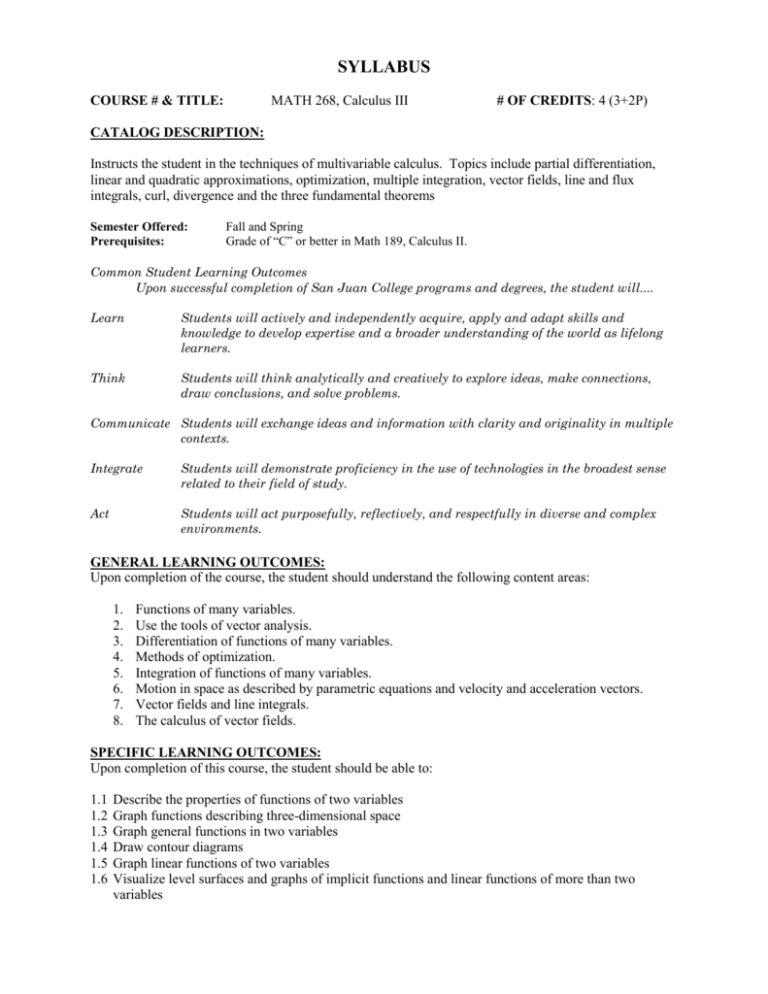
SYLLABUS COURSE # & TITLE: MATH 268, Calculus III # OF CREDITS: 4 (3+2P) CATALOG DESCRIPTION: Instructs the student in the techniques of multivariable calculus. Topics include partial differentiation, linear and quadratic approximations, optimization, multiple integration, vector fields, line and flux integrals, curl, divergence and the three fundamental theorems Semester Offered: Prerequisites: Fall and Spring Grade of “C” or better in Math 189, Calculus II. Common Student Learning Outcomes Upon successful completion of San Juan College programs and degrees, the student will.... Learn Students will actively and independently acquire, apply and adapt skills and knowledge to develop expertise and a broader understanding of the world as lifelong learners. Think Students will think analytically and creatively to explore ideas, make connections, draw conclusions, and solve problems. Communicate Students will exchange ideas and information with clarity and originality in multiple contexts. Integrate Students will demonstrate proficiency in the use of technologies in the broadest sense related to their field of study. Act Students will act purposefully, reflectively, and respectfully in diverse and complex environments. GENERAL LEARNING OUTCOMES: Upon completion of the course, the student should understand the following content areas: 1. 2. 3. 4. 5. 6. 7. 8. Functions of many variables. Use the tools of vector analysis. Differentiation of functions of many variables. Methods of optimization. Integration of functions of many variables. Motion in space as described by parametric equations and velocity and acceleration vectors. Vector fields and line integrals. The calculus of vector fields. SPECIFIC LEARNING OUTCOMES: Upon completion of this course, the student should be able to: 1.1 1.2 1.3 1.4 1.5 1.6 Describe the properties of functions of two variables Graph functions describing three-dimensional space Graph general functions in two variables Draw contour diagrams Graph linear functions of two variables Visualize level surfaces and graphs of implicit functions and linear functions of more than two variables 2.1 Describe vectors geometrically and numerically 2.2 Perform vector area and cross product calculations 2.3 Perform dot product calculations 2.4 Perform vector area and cross product calculations 3.1 Compute partial derivatives 3.2 Differentiate to determine local linearity 3.3 Find directional derivatives and gradients 3.4 Use the chain rule 3.5 Find higher order partial derivatives 3.6 Solve partial differential equations 4.1 Determine local and global extrema 4.2 Solve practical problems involving constrained (Lagrange Multipliers) and unconstrained optimization 5.1 Evaluate definite integrals of functions of two variables 5.2 Evaluate iterated (double) integrals in Cartesian and Polar coordinates 5.3 Evaluate triple integrals 5.4 Evaluate integrals in Cylindrical and Spherical coordinates 5.5 Change variables in a multiple integral 6.1 Solve parametric equations in two and three dimensions 6.2 Solve problems involving motion, velocity vectors in two and three dimensions 6.3 Solve problems involving acceleration vectors in two and thee dimensions 7.1 Evaluate vector fields and the flow of a vector field 7.2 Evaluate parameterized surfaces in two and three dimensions 7.3 Calculate line integrals 7.4 Demonstrate computing line integrals over parameterized curves 7.5 Evaluate gradient fields and path-independent fields, path-dependent vector fields and Green’s Theorem 8.1 8.2 8.3 8.4 Calculate flux integrals; flux integrals for graphs, cylinders, and over parameterized surfaces Determine the divergence of a vector field and knowledge of the divergence theorem Determine the curl of a vector field Use Stoke’s theorem OTHER REQUIREMENTS: The TI-82, TI-83, TI-84, TI-85 or TI-86 graphing calculator is required for the course. A TI-83 Plus or TI-84 Plus Graphing Calculator is strongly recommended. Graphing calculators capable of symbolic manipulation (such as TI-89 or TI-92 and other such calculators) will not be allowed on examinations, the final exam and where the instructor finds fit. A current syllabus must be on file in the dean’s office for every course being taught during a given semester.
